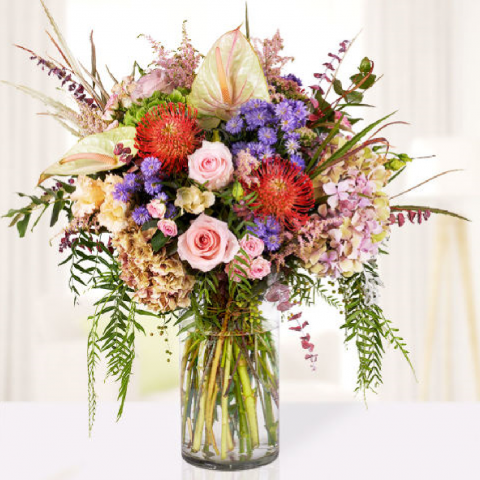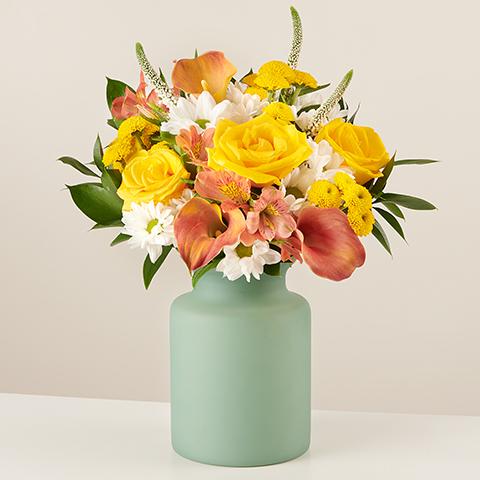For most of human history, the white rose has played some small part in our rituals, religious ceremonies, and other breathtaking events. For those who are solely interested in the beauty of nature, very few flowers can beat the white roses’ simple elegance. With its delicate petals, long arching stem, and pale, ghostly color, it is no wonder that it has been long held as the symbol of purity and innocence. From its use in bridal wreaths to the mythology of Greek and roman times, we explore its history and many meanings. Continue reading to find out more:
- White Rose Facts
- Mythology
- Color Symbology
- Religious Significance
- Cultural significance
- Germany and The White Rose
- How to Grow Your Own
White Rose Facts
The white rose, like its many-colored brethren, is a member of the genus rosa. The flower is a part of the rosaceae family and is a woody flowering plant. Perennial in nature, the white rose can live for quite a long time. With over 300 species and many more thousands of cultivated forms, roses are some of the most abundant flowers on the planet. They can be generally found on different varieties of shrubs, with their well-known prickles keeping them safe from any unsuspecting herbivores wandering around. Many of the rose species are native to parts of Asia, although they can be found in parts of Europe, Africa, and North America as well. Due to their wide-ranging significance in many cultures, the cultivars are common in most parts of the world.
Mythology
Before the rose ever became a part of mainstream culture, it already had a place in some of the world’s oldest mythologies. In Greek myth, the rose was associated with Aphrodite, with Homers famous Iliad paying homage to its use, showing Aphrodite protecting the great warrior Hector with its sacred oil. In Roman times, the novelist Apuleius wrote in his satire the golden ass that the mortal Lucius, who was transformed into a donkey, was instructed by the Goddess Isis to eat some roses off the crown of a priest to regain his lost human form.
Color Symbology
The white roses color is associated with ideas of new beginnings, as well as pure love. The concepts of purity, youth, and innocence are brought up again and again when looking at the white rose and its use in human history. It can also symbolize a deep reverence for someone or a cause and is linked to concepts of honor.
Religious Significance
When the Roman Empire began its conversion into Christianity, the white rose became a symbol of the virgin Mary, who herself was viewed as the ultimate symbol of purity. Each rose color has a symbolic association within the religion, and eventually lead to the creation of the rosary and its associated rituals, as well as other prayers. Some of the religious orders, such as the Franciscans and Carthusians, have utilized the white rose, and others, as symbols for different values, with purity, honesty, joy, light, and glory being the most prevalent.
Cultural Significance
The white rose has a place in many countries‘ cultural rituals. Commonly used in bridal wreaths to symbolize the purity of the bride and the beginning of something new. It is also used in funerals, where it is thought to symbolize our remembrance and respect for those who have departed, as well as a deep reverence for our loved ones. To give a single white rose to someone is thought to convey an everlasting devotion to them. Linking a white and yellow rose together is thought to imply harmony while adding a red symbolizes unity and a deep bond. During the war of the roses, which was a conflict spanning between 1455 to 1487, the houses of York and Lancaster vied for control of the English throne. The red and white rose each became symbols for the houses, with the famous artist Henry Payne showing supporters of each house choosing a side by picking a flower in one of his paintings.
Germany and The White Rose
A non-violent resistance group during the time of Nazi-controlled Germany, weibe rose, or the white rose, handed out secret pamphlets calling for opposition to the Nazi government’s control. They also sprayed graffiti around the city to spread their message further. The leading members of the group were eventually found out, unfortunately, and were killed or imprisoned. The founders, Sophie Scholl and Christoph Probst were killed by guillotine, not the most pleasant way to leave. They utilized the white rose symbol to show their purity of spirit against what they believed to be the horrendous atrocities being committed by their government, and their sacrifice should not be forgotten.
How to Grow Your Own
Growing roses can be a bit difficult depending on your location but overall it is not too much of a hassle. Find yourself a good location that gets a nice amount of sunlight, as roses thrive best on at least six hours of sunlight. Once you’ve chosen your spot, dig nice and deep and add in some peat moss or organic compost as you want the soil to be as nutrient-dense as possible. Roses tend to do best in moist soil, but vary your watering’s depending on what kind of environment you live in. Make sure to water around the area as roses tend to branch out their feeders quite widely. Adding a layer of mulch around the roses may help to retain the moisture so you don’t need to worry as much. As always, keep your eyes peeled for any invasive bugs, especially beetles as they tend to enjoy munching on roses of all kinds.
The Lovely White Rose
From concepts of love and purity to religious associations with people such as the Virgin Mary, the white rose has become a widely used symbol throughout much of the known history of humankind. It has inspired weddings, movements against brutal dictatorships, and battles for control over nations. There are very few flowers which can compete with the history of the white rose, and we must pay homage to its part in our world.







